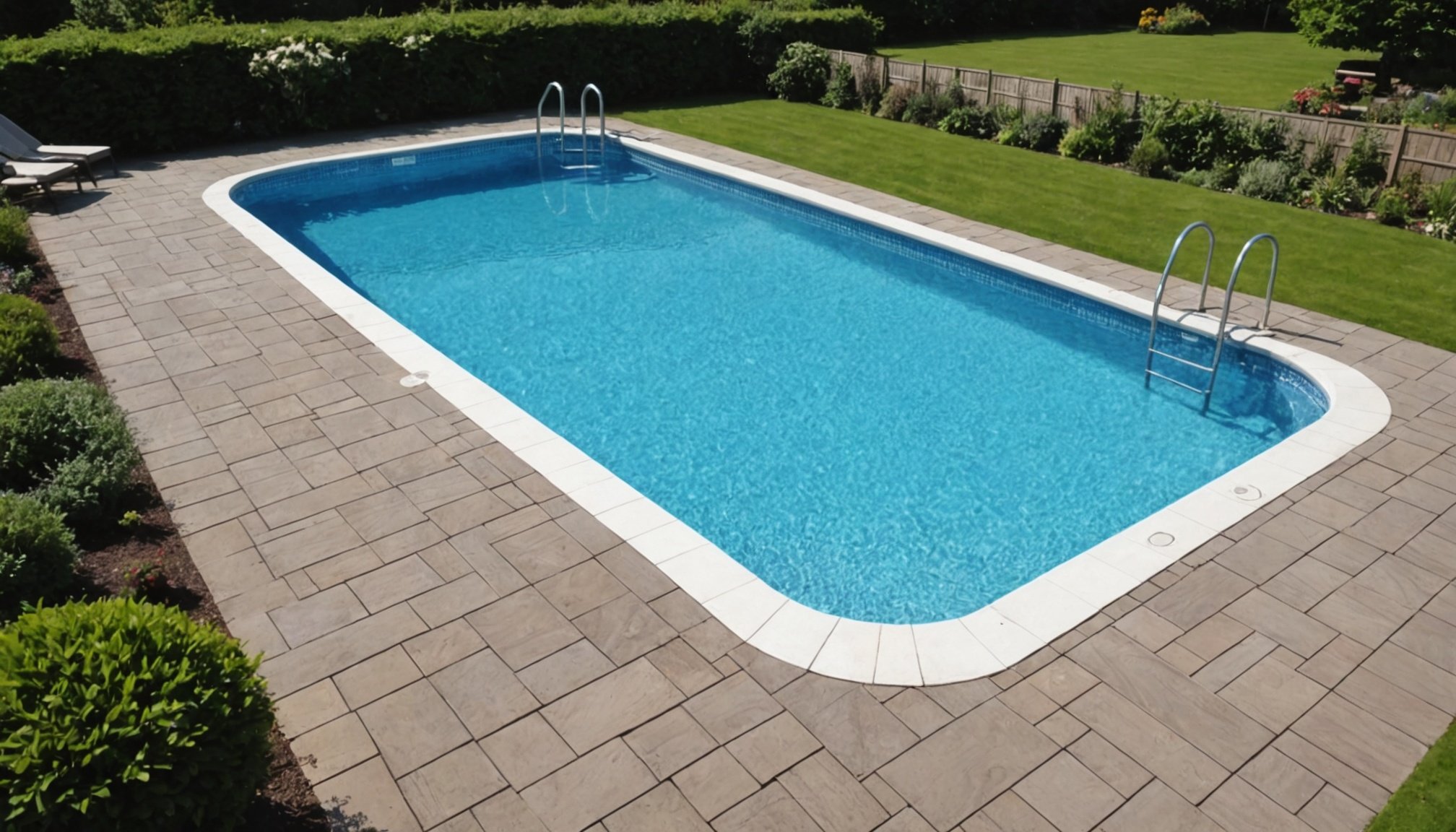Planning Permission for Swimming Pool Construction
When considering constructing a swimming pool in the UK, understanding whether planning permission is necessary becomes indispensable. Generally, planning permission is required if the pool structure affects the aesthetic or involves significant land alteration. However, local building regulations often dictate the exact criteria for approval.
Moreover, it’s crucial to engage with your local council early in the planning stage. They provide detailed insights into the planning process and highlight specific requirements or restrictions that may apply to your area. Forearmed with this knowledge, gather necessary documentation. This includes site plans, design specifications, and possibly an environmental impact assessment, depending on the project’s nature and location.
Avez-vous vu cela : Transform Your UK Home Pool into a Tropical Oasis: Tips for Achieving a Lush Landscape
Interestingly, there are scenarios where planning permission may not be required due to permitted development rights. These exemptions typically apply to smaller pools that do not extensively modify the landscape or exceed certain size constraints. It’s advisable to check with your local council to confirm if your project qualifies under these exemptions.
To ensure compliance and avoid unnecessary delays, meticulously prepare your application. Submit it with all required documents to the local planning authority. Engaging a professional to assist with the process could enhance your chances of success, ensuring your swimming pool meets all regulatory requirements.
Cela peut vous intéresser : Exploring the Benefits of Adding a Pool House to Your UK Swimming Pool Retreat
Health and Safety Regulations
Health and safety are paramount when it comes to residential swimming pools. Ensuring compliance with safety standards is not just a legal obligation but a crucial step in protecting lives. Let’s explore the key regulations homeowners need to be aware of.
A primary aspect of health and safety in residential swimming pools is the establishment of effective safety barriers. Fences or gates with self-locking mechanisms are essential to prevent unsupervised access, especially by children. Additionally, many regions mandate pool alarms that alert homeowners to unauthorized entry or distress in the pool.
The correct and visible placement of signage is equally critical for safety. Signs should provide clear instructions, including depth markers and warnings about diving. Following these regulations not only prevents accidents but also promotes a culture of safety and responsibility.
Homeowners hold significant responsibility in ensuring compliance with health and safety standards. Regular pool inspections should be conducted to ascertain that all safety barriers and alarm systems are functioning correctly. Homeowners are also advised to familiarize themselves with the local regulations to ensure full compliance.
In summary, adhering to health and safety regulations protects loved ones and reduces liability. By understanding these requirements, pool owners can maintain a safe environment for everyone.
Local Council Considerations
When contemplating swimming pool construction, understanding the role of the local council is paramount. These authorities are responsible for enforcing zoning laws and community guidelines, ensuring constructions adhere to safety and environmental standards. The guidelines set by the local council can significantly impact your pool plans, from the location to the size and even the type of pool you can build.
Local councils may impose specific zoning laws that dictate setbacks, fencing requirements, and more. Regulations can vary significantly depending on the region or municipality. For instance, what is permissible in one area might be restricted in another due to different environmental concerns or community standards. Thus, homeowners must be aware of these variances to avoid potential fines or having to alter or halt construction.
Engaging with local authorities early in the process can provide valuable guidance and expedite approvals. It typically involves submitting detailed plans for review and possibly attending council meetings. Obtaining early input can help address any concerns and ensure that your project complies with all applicable regulations. Being proactive in this process not only keeps your project on track but also strengthens your standing within the community by demonstrating a commitment to local guidelines.
Insurance Considerations
Building a swimming pool requires careful attention to insurance requirements. As a homeowner, it’s essential to understand the types of insurance necessary to protect your investment. Typically, homeowner’s insurance provides a solid foundation, but additional coverage might be beneficial, particularly for those who prioritize safety and financial security.
Liability coverage is critical when it comes to pool safety. It protects homeowners from potential lawsuits if someone is injured on their property. Most standard homeowner’s insurance policies include some liability coverage; however, the scope might not be sufficient for properties with swimming pools. Enhancing your liability coverage ensures adequate protection against unexpected legal claims.
When constructing a pool, it’s vital to review and update your homeowner’s insurance policy. Engage with your insurance provider to discuss any changes in your coverage needs. Consider the following tips:
- Assess the current liability limits: Determine if they meet the increased risk associated with owning a pool.
- Explore umbrella policies: These can offer additional liability coverage beyond the standard homeowner’s policy.
- Document your pool’s safety measures: Highlight features like fences and pool alarms to potentially lower your insurance premiums.
By taking these steps, homeowners can ensure they have comprehensive protection while enjoying their new swimming pool.
Environmental Factors
When considering swimming pool installation, understanding the environmental impact is crucial. A pool significantly alters the natural landscape, potentially affecting local ecosystems. It’s essential to evaluate how the construction and upkeep of a pool may influence your property’s environment and broader community.
Proper drainage is another key factor that mustn’t be overlooked. Poor drainage can lead to waterlogging, possible flooding, and long-term damage to your garden and adjacent properties. Ensuring sustainable pool maintenance practices includes using eco-friendly chemicals and efficient filtration systems to minimize negative environmental impact. Opt for energy-efficient pumps and heaters to promote sustainability too.
Besides site-specific challenges, local environmental regulations play a significant role in shaping your construction plans. These regulations might dictate specific materials used or set restrictions to protect native flora and fauna. Familiarizing yourself with these rules not only ensures compliance but also means your pool contributes positively to sustainability rather than detracts from it.
- Evaluate the ecological consequences
- Emphasize sustainable technologies
- Comply with regional environmental guidelines
By addressing these factors, you will not only maintain your property’s beauty but also uphold your responsibility as a steward of the environment, ensuring your pool complements rather than compromises its surroundings.
Common Pitfalls and Tips for Homeowners
Embarking on the construction of a swimming pool is an exciting project for any homeowner, but it’s not without its common mistakes. One frequent pitfall is underestimating the complexity of the legal landscape involved. Before even breaking ground, homeowners must secure necessary permits and ensure compliance with local laws. Failure to do so can lead to hefty fines or project delays.
Another common mistake involves budgeting. Homeowners often focus on initial construction costs, overlooking long-term expenses such as maintenance and energy usage. A precise budget should account for these variable costs to prevent financial strain later.
When it comes to construction tips, ensuring a smooth process requires meticulous planning. Carefully selecting a reputable contractor with verifiable references can mitigate risks of poor workmanship or project mismanagement. Establishing clear communication and setting achievable timelines also contribute to an efficient project flow.
For those attempting to navigate the permitting process, understanding local zoning laws is crucial. Consulting with legal experts or municipal offices can provide valuable insights and help avoid legal pitfalls. Additionally, it’s wise to verify any contractual obligations clearly, ensuring both parties understand their responsibilities.
In summary, homeowner advice suggests that comprehensive planning, legal diligence, and careful budgeting are key to avoiding major pitfalls in pool construction.











